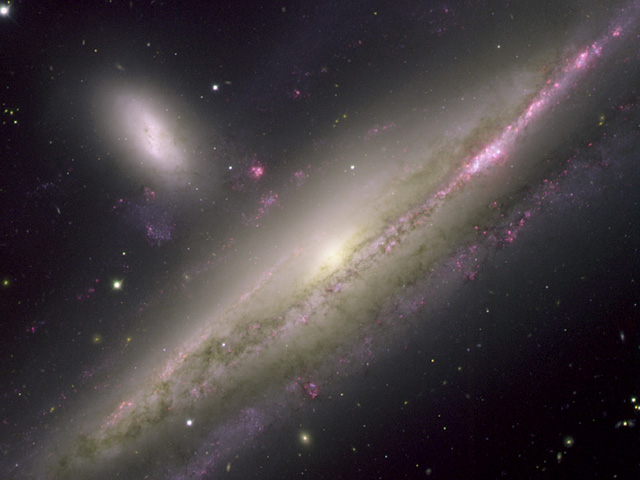so then these galaxies and earlier you mentioned sagittarious as being swallowed up by the Milky Way and therefore are suggesting that the stars being swallowed is the reason then that we find stars older than our own galaxy
however since these galaxies are local , close to our own galaxy , why would sagittarious stars be any older than the stars in our own galaxy ?
You are continuing to ignore the second prong of my argument: The Milky Way is one of the original galaxies in the universe.
So, back to the first prong. The oldest stars in our galaxy that we have observed are in the galactic halo. HE 1523-0901 (see post #111), for example, is a halo star. Up until around 10 years ago, astronomers thought the halo stars formed with the galaxy. Per this model stars in the galactic halo will be small and have low metallicity (to an cosmologist, anything above lithium is a metal). There isn't much stuff from which to form stars far from the galactic core: Stars that form in the halo will tend to be small. Metallicity decreases with increased distance from the galactic core. Small stars live a lot longer than do larger stars. Metals help stars burn fuel. Small stars with low metallicity will live a long, long time.
In the last decade, astronomers have seen more and more evidence accumulate that indicates that many of the halo stars are of extragalactic origin. Marsakov and Borkova have gone so far as to claim that the majority "of metal-poor stellar objects in the Galaxy have an extragalactic origin." Some of the dwarf galaxies from which the Milky Way stole the halo stars are (were) of lower density and metallicity than the Milky Way. The stars in these dwarf galaxies will inherently be very old. The stars of corresponding age in the Milky Way died a violent death a long time ago.
References -- lay articles:
Kate Wong, "Milky Way's Oldest Stars May Be Galactic Intruders", Scientific American, July 2002.
http://www.scientificamerican.com/article.cfm?id=milky-ways-oldest-stars-m
Robert Roy Britt, "Puzzling Ring of Stars Discovered Circling the Milky Way", SPACE.com, January 2003.
http://www.space.com/scienceastronomy/milkyway_ring_030106.html
Technical preprints and reprints:
T.V. Borkova, V.A. Marsakov, "Stars of extragalactic origin in the solar neighborhood", arXiv:astro-ph/0403148v1, 2004.
http://arxiv.org/abs/astro-ph/0403148
T.V. Borkova (Rostov University), V.A. Marsakov (Rostov University)
G. S. Da Costa, "The Star Cluster Systems of the Magellanic Clouds", arXiv:astro-ph/0106122v1, 2001.
http://arxiv.org/abs/astro-ph/0106122v1
V.A. Marsakov, T.V. Borkova, "Stellar Objects of Extragalactic Origin in the Galactic Halo", arXiv:astro-ph/0710.4364v1, 2007.
http://arxiv.org/abs/0710.4364
Originally published in Odessa Astronomical Publications, vol. 20 (2007) in Russian. The arXiv reprint is an admittedly rough translation from Russian by the authors.
Julio F. Navarro, Amina Helmi, Kenneth C. Freeman, "The Extragalactic Origin of the Arcturus Group", arXiv:astro-ph/0311107v2, 2003.
http://arxiv.org/abs/astro-ph/0311107
Andres Meza, Julio F. Navarro, Mario G. Abadi, Matthias Steinmetz, "Accretion relicts in the solar neighbourhood: debris from omegaCen's parent galaxy", arXiv:astro-ph/0408567, 2005.
http://arxiv.org/abs/astro-ph/0408567


